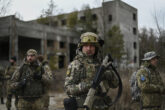March 05, 2018
Safety Analysis of Leishmania Vaccine Used in a Randomized Canine Vaccine/Immunotherapy Trial
In Leishmania infantum–endemic countries, controlling infection within dogs, the domestic reservoir, is critical to public health. There is a need for safe vaccines that prevent canine progression with disease and transmission to others. Protective vaccination against Leishmania requires mounting a strong, inflammatory, Type 1 response. Three commercially available canine vaccines on the global veterinary market use saponin or inflammatory antigen components (Letifend) as a strong pro-inflammatory adjuvant. There is very little information detailing safety of saponin as an adjuvant in field trials. Safety analyses for the use of vaccine as an immunotherapeutic in asymptomatically infected animals are completely lacking. Leishmania infantum, the causative agent of canine leishmaniasis, is enzootic within U.S. hunting hounds. We assessed the safety of LeishTec® after use in dogs from two different clinical states: 1) without clinical signs and tested negative on polymerase chain reaction and serology or 2) without clinical signs and positive for at least one Leishmania diagnostic test. Vaccine safety was assessed after all three vaccinations to quantify the number and severity of adverse events. Vaccinated animals had an adverse event rate of 3.09%, whereas placebo animals had 0.68%. Receiving vaccine was correlated with the occurrence of mild, site-specific, reactions. Occurrence of severe adverse events was not associated with having received vaccine. Infected, asymptomatic animals did not have a higher rate of adverse events. Use of vaccination is, therefore, likely to be safe in infected, asymptomatic animals.
Read the full article in The American of Tropical Medicine and Hygiene.
More from CNAS
-
Defense / Transatlantic Security
When Defense Becomes Destruction: Austria-Hungary’s Mistake and Ukraine’s RiskThis article was originally posted on War on the Rocks. The southeastern Polish city of Przemyśl, with its elegant 19th century Habsburg-era train station, remains one of the ...
By Franz-Stefan Gady
-
Defense / Transatlantic Security
Ukraine’s Catch-22 MomentThis article was originally published in the Financial Times. In Joseph Heller’s wartime classic, Catch-22, the protagonist Yossarian seeks out the US army surgeon Doc Daneeka...
By Franz-Stefan Gady
-
CNAS Insights | Budgetary Own Goals Undermine “Speed and Volume”
On November 7, Secretary of Defense Pete Hegseth laid out a plan to overhaul the Department of Defense’s (DOD’s) acquisition system. Placing an emphasis on delivering new capa...
By Philip Sheers, Carlton Haelig & Stacie Pettyjohn
-
Drones: Who Is Making the New Weapons of War?
From Ukraine and Russia to Gaza and Sudan, drones have become a key weapon of war. Which companies are making them, and profiting from this rapidly expanding but controversial...
By Stacie Pettyjohn




